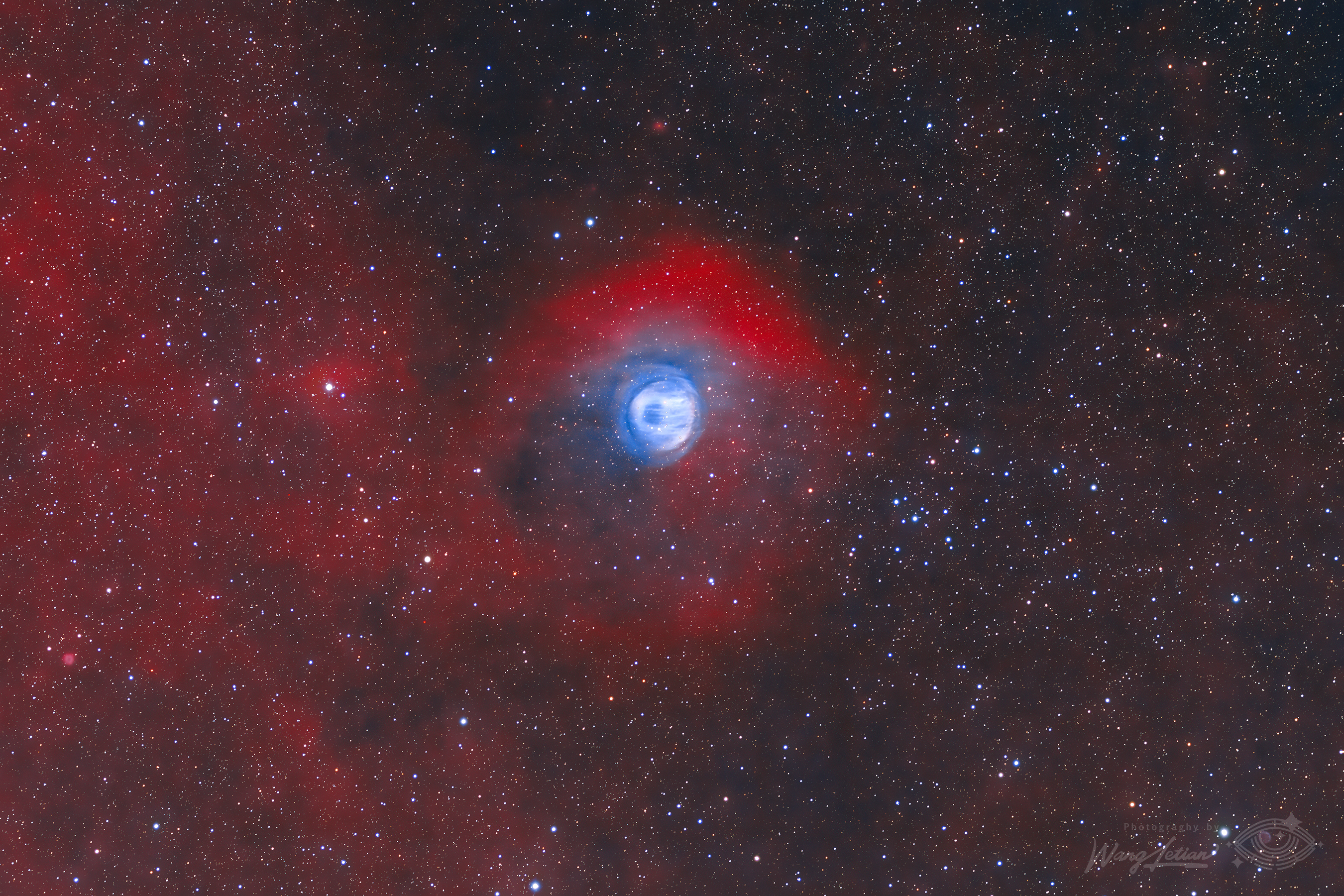
-

Sh2-200 the Bear Claw Nebula
The Bear Claw Nebula was first discovered by the astronomer Stewart Sharpless in 1959 who included it in his catalogue of HII regions under the name of Sh2-200. This nebula is an ancient planetary nebula in the constellation Cassiopeia. Its age makes its size fairly large due to continued expansion and its surface brightness is quite low. The bright part of the object has a diameter of about 6'. Interestingly there is a larger outer halo around the brighter part of the nebula but it is very faint and needs the exposure time to capture it. The nebula contain very hot and energetic central stars, which are the remnant cores of the progenitor star that died and ejected its outer gaseous layers. The energy output of some planetary nebula central stars is so prodigious that it is capable of ionizing unrelated gas in the surrounding vicinity causing it to glow.
Image information: Date: Oct 2022; Exposure time: 35 hours (72x900s Ha and 64x900 OIII and RGB 3x20min); Telescope: TEC140ED APO with 0.72x AP Reducer lens; Camera: ASI ZWO 6200 MM; Mount: Paramount MX mount.
Wang Letian All Rights Reserved